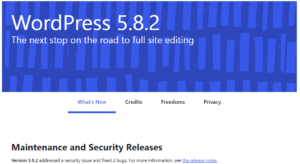CDN stands for a content delivery network. It’s used to deliver content at the nearest places of the users to make a content source reach at faster speed so that user experience could be improved.
How CDN Works
Suppose that your website is hosted or server of your website is in the US and users from all around the world are using it. Now consider that if a website is hosted in the US and a user from Japan is visiting it, so this distance between users and server of the website may impact the speed of the website. In other words, we may say that longer distances may cause a website load at a slower speed.
A CDN has servers at different locations of the world almost in every big city of the world and the keep a fresh copy of our website and serve that copy from the nearest server to the user and in this way, a website connected to the CDN is served at a fast pace as compared to those who are not connected to CDN.
Google PSI and TTFB
If you are a website owner and you are obsessed with your website speed and you keep checking your website’s speed frequently over Google Page speed Insights ( psi ). I’m sure you would have come to know through psi telling TTFB ( time to the first byte ) or slow server response. This metric shows that our web site’s server is slow and taking time to respond and it usually happens because of far off location from a user ( I’ve supposed that all other metrics like VPS/hosting is OK ) and this TTFB could be controlled by using a CDN.
Free and easy to use CDN
There are many CDNs available free and paid but I’d mention here only a few CNDs:
1: Cloudflare
Cloudflare is free CDN to use and it is very simple to configure with your website. You just need to change the name servers of your domain from parent hosting to Cloudflare.
2: AWS Cloudfront
They provide a one-year free service of CDN and after one year they will charge. You may connect your website to Cloudfront through W3 Total Cache if you use a word press website but there is another way by creating a cloud service S3 and then using ACM ( Amazon certificate management ) and then creating distribution for Cloudfront.
3: Max CDN
Max now has become Stackpath and they provide a month free trial and after that they charge according to plan taken. They have 24 hours of support to help you with their services.
List of CDN
besides above CDN providers here is a long list which I’ve not tried yet.
- Akamai
- Incapsula
- Cachefly
- KeyCDN
- LimeLight
- Verizon
- Google Cloud CDN
- Azure CDN
- BunnyCDN
- CDNetworks
- Biggravity
- CDN77
- CDNify
- ChinaCache
- EdgeCast
- Fastly
- Highwinds
- Internap
- Level3
- NetDNA
- Telefonica



